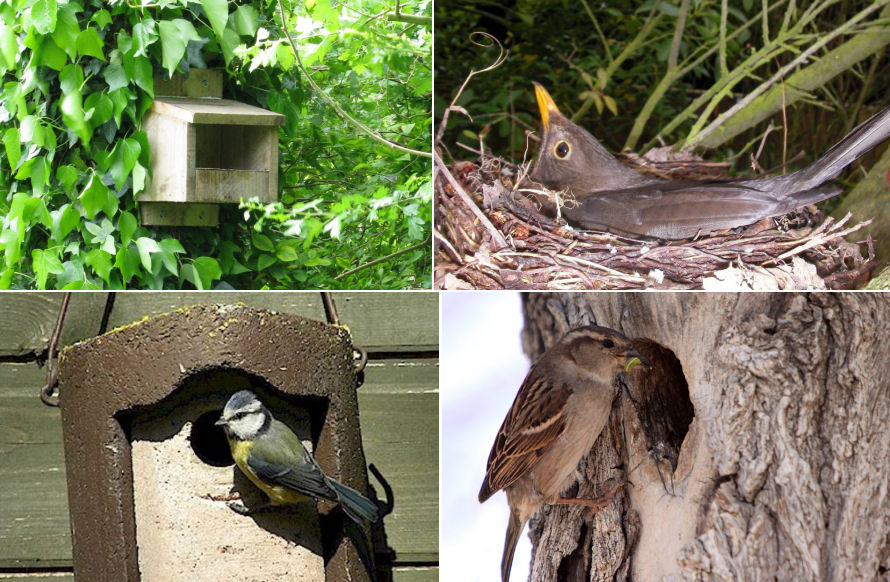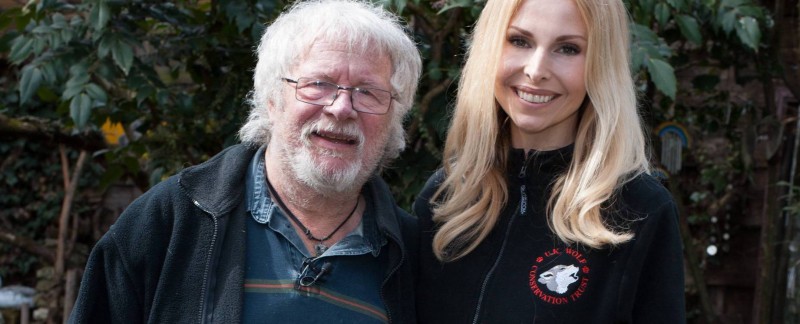TV Naturalist Bill Oddie & I got together to film Spring Birds and discuss what you at home can do to help them every spring.

This time of the year is such an exciting time, with the rich cry of bird song in the air, the busy collecting of sticks from lawns and the fighting over territory of our usually sweet and demure garden birds. Who then better to head on over to chat with than bird expert extraordinaire, the lovely Bill Oddie whose garden is a fabulous haven for all creatures great and small.

Firstly, the topic of what you at home as a gardener can do to help all the animals and the one thing which we spoke about was:
Don’t be overly tidy

Sadly, every Spring, us humans are all too quick to burst out of our houses at the first rays of sun and start cutting the lawn, sweeping up all the old leaves and obliterating every piece of dirt with pressure washers. This really affects all the bugs in their fragile state as many have still not come out of their winter slumber. Also the manic cleaning up means less food for birds who would be really grateful to be able to rifle through all the leaves looking for bugs, worms and beetles.
Birds can be weak after winter, if it has been a particularly bad one, and the best thing you can do is give them:
- Food
- Water
- Nest Boxes
- Natural Garden Mess to find their own food

Birds will first be gaining their strength, and then they will be looking for a mate. Once paired, depending on the type of bird, they will be looking for that perfect home, so if you would like some nests to appear in your garden, you need to give them the right environment. Each type of bird likes a different nest box and location.
ROBIN – open fronted box in a very private, quiet and concealed location
BLACKBIRD – Makes own nest very low down nest in shrubs
BLUE TIT – round holed nest boxes up a tree
SPARROW – round holed nest box on a wall

Bill explained that wrens and blackbirds nest down low, robins like open fronted boxes in a really covered and private area so growing lots of ivy over a wall is a great environment to attract them. It’s also important to get the right type of food as some birds are meat eaters and others seeds; Bill likes to put out both seeds and live meal worms. His expertise in bird food has even seen him launch his own bird food brand.

While we were there we saw a wonderfully tame and very LOUD wren who had definitely made friends with Bill, a brave and daring robin and a glorious green Monk Parakeet who climbed down his feeder in front of us both. There were frogs in his pond and so much frog spawn everywhere that it was evident that Bill really does love his wildlife.

His words of wisdom always led back to the same statement, that it’s the tidy gardener who is wildlife’s greatest enemy and if you want wildlife to come into your life, you need to leave your garden just the way it is, interfere as little as possible and assist by putting food and water out as needed.
Finally we discussed one of the biggest questions of all – what do you do when you see a baby fledgling on the ground. If it is a very young fledgling who has obviously fallen out of the nest before his or her time, you can always try and put it back. If there is imminent danger, such as the nest being destroyed, too high or the bird is at risk of being killed, then and only then should the bird be taken to a rescue centre. If the fledgling is an older fledgling and simply trying to find its wings, the best thing to do is leave well alone as the parent birds will be around, watching the chic and still feeding it. This is very common with blackbird fledglings who sometimes crawl out of the nest at nine days old and hide away in hedges and shrubs for a few days before taking to their wings.


